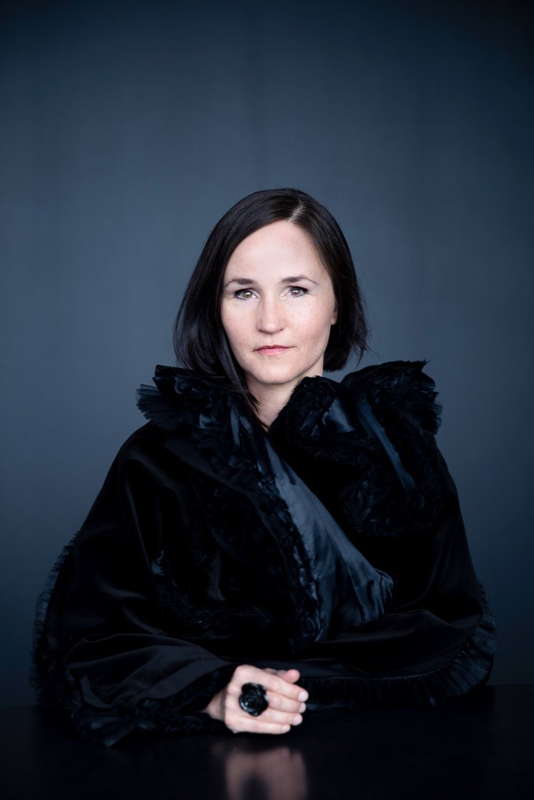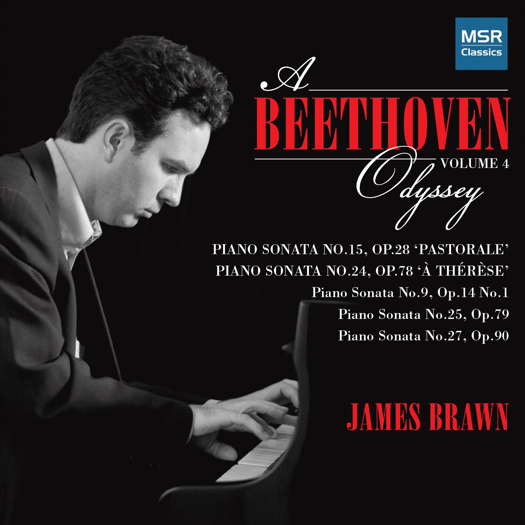 SPONSORED: DVD Spotlight. Olympic Scale - Charles Gounod's Roméo et Juliette, reviewed by Robert Anderson.
SPONSORED: DVD Spotlight. Olympic Scale - Charles Gounod's Roméo et Juliette, reviewed by Robert Anderson.
All sponsored features >>
Undeniably Exciting
MIKE WHEELER listens to
Bizet, Ravel, Debussy, Anna Thorvaldsdottir,
Sibelius and Walton from Jean-Efflam Bavouzet,
Yan Pascal Tortelier and the Iceland Symphony Orchestra
As Storm Ciara headed towards the UK, the Iceland Symphony Orchestra and conductor Yan Pascal Tortelier were in Nottingham's Royal Concert Hall, whipping up a storm (or, rather, several) of their own - Nottingham, UK, 8 February 2020.
To start, they made their own selection of five movements from the two suites put together from Bizet's L'Arlésienne score. In the Pastorale from Suite No 2, the flute and cor anglais episode had an appealingly rustic quality. From Suite No 1 we heard the Carillon, which reflected all the transparency of Bizet's scoring, a Minuet both earthy and delicate, by turns, and a touching account of the strings-only Adagietto. Then it was back to the second Suite for a Farandole of irresistible vitality.
What turned out to be one of the angriest accounts I've heard of Ravel's Piano Concerto for the left hand opened in eerie darkness, with the contra-bassoon theme (the player not separately credited but presumably Brjann Ingason) uncoiling steadily and purposefully. Soloist Jean-Efflam Bavouzet's first entry was full of coiled tension, before leading the way in the sublimated baroque dance that follows. As the piece moved into the central scherzo-cum-grotesque dance, he revealed huge reserves of both musical and physical energy, often turning to the orchestral players nearest him as if egging them on - not that they needed it. Bryndis Thorsdottir's bassoon solo later added an eloquent lamenting strand to the surrounding echoes of Bolero. In Bavouzet's hands the cadenza was a compelling build-up to a positively feral signing-off. His encore, Debussy's L'Isle Joyeuse, brought a different kind of excitement.
The second half began with Aeriality by the orchestra's Composer in Residence, Anna Thorvaldsdottir. A mesmerising thirteen-minute sonic landscape to get happily lost in, it offers a mosaic of tiny sound-images, from percussive sounds both hard - including snap pizzicatos for the cellos and basses, like twigs snapping - and soft - rustlings and murmurings on the edge of audibility, to trickling figures on wind and piano, gentle string glissandos, and quiet but insistent pulsing rhythmic phrases. The emergence of more warmly lyrical string writing towards the end was exhilarating in its own quiet way. I simply didn't want it to end, and the orchestra and conductor did their composer (who took a well-deserved bow) proud.

Icelandic composer Anna Thorvaldsdottir (born 1977)
The timpani roll that launches Sibelius' Symphony No 1 suggested a link with Thorvaldsdottir's piece. Here it had a genuine presence of its own, and was not just a neutral backdrop to Grimur Helgason's characterful clarinet solo. (In fact, timpanist Soraya Nayyar was a powerhouse of energy throughout the evening.) The orchestra brought a range of vivid colours to the music, including some especially pungent woodwind. There was real sense of something primeval in the sometimes gritty account of the first movement, typified by the way the strings' final pizzicato was allowed to ring out.
The second movement was a wild ride from storm to sudden calm and back, with the central episode sounding fresh, airborne and spring-like, followed by a similarly punchy reading of the third movement. The finale's episodic nature was handled with more than enough conviction to carry us over the joins, and on its final appearance the Tchaikovskian big tune was allowed to billow out in full sail. The sudden hush at the end was as startling in its way as the earlier storms had been. Like the performance of the previous movements, it was all a bit larger than life, but undeniably exciting.
A delicately shaded reading of 'Touch her Soft Lips and Part' from Walton's Henry V score was the first encore, after which the 'Wild Bears' of Elgar's The Wand of Youth were very properly allowed to rampage all over the place.
Copyright © 18 February 2020
Mike Wheeler,
Derby UK

FURTHER ARTICLES ABOUT ICELAND



